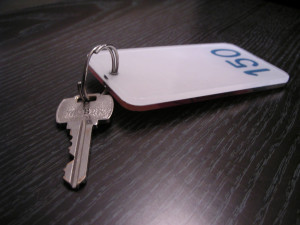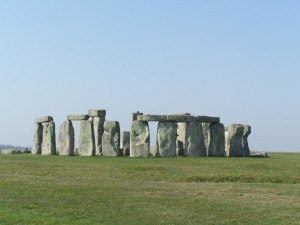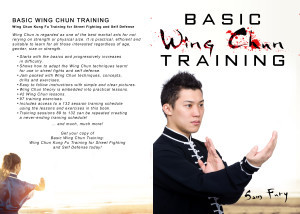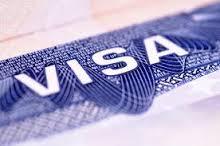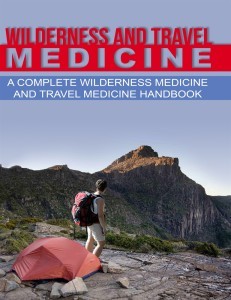Aventuras De Viaje's Blog, page 38
July 17, 2015
How I Created a Life of Endless Travel and How You Can To!
Accommodation Deals - Sponsored
Cheap Flights - Sponsored
Google Sponsored Ads
Contact Us to Advertise
On the 14th of July 2015 I (finally) began endless travel. First I’ll share how I created a life of endless travel and then I’ll let you know how you can do the same.
For the last decade or so I’ve been doing the work abroad thing. I do not count working abroad as endless travel, because there is the obligation of work. Three years ago I decided to build an income that I do not need to stay still for i.e. so I can just stop or go as I please. Being able to go and do what I want when-ever I want is what I mean when I say endless travel.
How I Created a Life of Endless TravelI first caught the travel bug in 2002, but it wasn’t until 2011 that I made a firm decision to create a life of endless travel. To do that I needed to create a source of residual/passive income. Actually, I had been trying to do this since I first came back from Malaysia in 2003, but I failed at it… alot (for 8 years no less!)
Oh man!! … You have NO idea how much time I spent trying out all kinds of different business ideas. I wouldn’t say it was a waste of time, because I learnt a lot (about what not to do), but it was a lot of time spent none the less.
The difference is that my firm decision in 2011 to create a life of endless travel gave me a definite goal – and definite goals are accompanied with massive determination.
I knew it was going to take a lot of work so my next step towards creating a life of endless travel was to maximise my time. I did an on-line TESOL course and started teaching English in China.
Teaching English in China was the best way I could find for me to maximise my time so I could work on creating a residual income (and therefore a life of endless travel), whilst still making enough to travel during the holidays (approximately 12 weeks a year). I taught a maximum of 16 hours a week and because China is so frigin’ cheap I actually saved more money there than I have in any western country I have worked in including the UK, USA, and Australia!
Anyway, the idea was to work in China until I was making at least $50/day residual income. That goal was achieved in January 2015 so I went about preparing for a life of endless travel.
Actually, my residual income has dropped dramatically since then (it seems that was just a “spike” in income and only lasted three to four months). It is now a steady 500-600 $US/month, but gradually climbing. Also I managed to save up a bit so that will cover me until it builds back up.
The Universe is On My SideI am not from a wealthy background. Money is something the universe did not endow me with. I am from a single parent family and was not taught about money when I was young so I got into debt as soon as I could (worst thing I ever done). Actually, I only just finished paying it off earlier this year (yes, I have been paying of debt WHILST traveling – this surprises many people but it is very possible.)
Fortunately I have two things that far outweigh the lack of money and I would dare say that at least 70% of the people that read this post will have the same:
1. English is my native language
If you are from a native English speaking country then your ability to work in other countries is much higher than the rest, and not just for teaching English (although that is a really good option). Most countries that have English as a first language are also those that are travel friendly, i.e., relatively easy to get visas.
2. I am a positive person
I truly believe that this trumps everything. If you believe you can do something, you can. Also, when things go wrong (and they will) the positive ones know that everything will be alright. Sh*t hitting the fan can be fun with the right attitude.
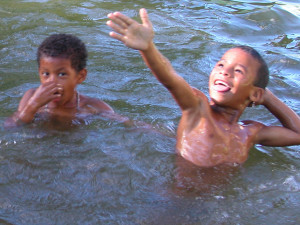
Positivity is a must have attribute!
How You Can Do the SameYou Don’t Need Lots of Money to Live a Life of Endless Travel!I think a lot of people think that traveling costs a lot of money. It does not. I spend less living my life of endless travel than I did when I was living a “normal” life because I don’t have anything to “maintain” e.g. car, house, children etc.
On average, I spend well under $1000usd a month. This is because I travel in cheap countries and do not have expensive tastes (I’m just a cut above homeless – closer to a well-fed bum that indulges in private accommodation).
My two biggest expenses are food and accommodation and I keep these low by eating like locals and always going for the cheapest private accommodation I can get, that is still in a decent location. (Check out my travel rules for more details.)
I feel I splash out on accommodation. It can get much cheaper in shared dorms or even free on couch-surfing.
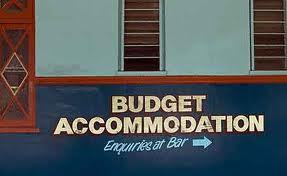
Accommodation is probably my biggest expense but I never spend more than $20usd a night.
What You Need is TimeInstead of trying to create lots of money, work on how you can maximize your time. You need to create a residual income. I have built mine with this blog (and some other ventures I experiment with), but there are an enormous amount of ways you can do it. Eventually I will put my method step by step into a book, but for now, read the Four Hour Work Week by Timothy Ferris to get ideas and start doing it.
It will not happen over night (it has taken me three years and I’m still not 100% there yet) but just keep on keeping on. Persistence pays off and those that want it make it!
I Will Help You!I know there are not actually any details about how created my residual income, nor are there any on how you can create yours, but that is because everyone is different. The way I did it is most likely not the way you want to do it, however, I can still help you. Just contact me through the contact page. Don’t worry, I wont charge you anything.. perhaps one day we can meet during our travels and you can buy me lunch.
Do You Have or Do You Want a Life of Endless Travel? Let Me Know in the Comments
The post How I Created a Life of Endless Travel and How You Can To! appeared first on Survive Travel.
The Survive Travel 8 Step Travel Planning Guide
Accommodation Deals - Sponsored
Cheap Flights - Sponsored
Google Sponsored Ads
Contact Us to Advertise
Ideally I would like to be able to just tour a country at leisure. Unfortunately time limits are a thing we must contend with (visas, family, work etc). Hopefully this 8 step travel planning guide will help you get the most out of the time you have and see the things you really want to see. As a bonus, a well planned itinerary will also save you money.
Travel style is a very personal thing. Some people like to see and do everything, others prefer to just chill on the beach for two weeks, and then there is everything in-between, so to write an post on how to plan your perfect trip that suits everyone is not what I am attempting to do. Instead, I am just over-viewing the steps I personally go through when planning a trip. Hopefully you can use them as a guideline and adapt them to yourself.
This travel planning guide starts on a country wide level and then funnels into cities etc, but the method can be adapted for any type of prefecture (city, region, hemisphere etc).
The Survive Travel 8 Step Travel Planning Guide1. Check About VisasStep one of my 8 step travel planning guide is to see if I need a visa, and if so what I need to get it (time, money, procedures, etc.). Also, knowing how long it will last and how you can extend it (if needed) is very useful information.
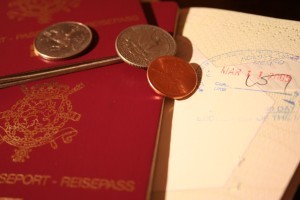
Step 1. Suss Visas!
2. Plot Your “Must Sees”Wikitravel.com is my first stop for checking out what I might want to do.
In this step note down anything that you think “man, I really wanna do/see that.”
First I type in the country and check out the things to do/see lists. I will then do the same for every region, city, area etc. that wikitravel links to in that country.
For each item note:
a) Where it is
b) Any other useful notes (cost, direction etc.)
c) A rating of how much you want to see it. I usually give it a rating of either one or two. One being “I’m absolutely am going to do this” and two being “I’d really like to see/do it but I can skip if if really necessary”
Remember, these are things you really want to see, don’t put in every little thing you might want to do.
I also do a general internet search for “things to do in ‘destination’. Replace the words “things to do” with whatever takes your interest, e.g., off the beaten track, adventure sports, food.
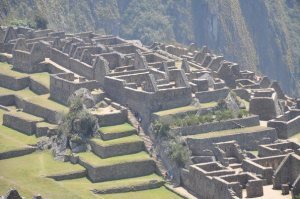
Step 2. What is on your your ‘Must See’ list?
3. Plot the Locations of Your “Must See’s” on a MapI use google maps. Put the location of each item on from you “must see” list (all of them) and then plot a logical route to take. This prevents backtracking etc.
The accuracy of the item location is relative to the size of the area you are planning, e.g., when planning a whole country I just plot cities. If I am planning a city I will plot the different regions of the city.
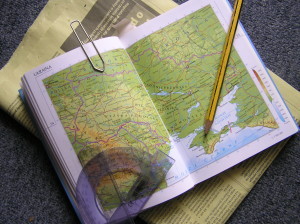
Step 3. Plot your journey on a map.
4. Figure out TransportWork out roughly how you are going to get between the locations from step three. Research your preferred mode of transport and then find how much is will cost, how long it will take and any other important information e.g. frequency of the transport, if you need to pre-book tickets etc.
If there are a few choices and you are undecided, note them all down.

Step 4 – How are you going to get from place to place?
5. Create a Rough Time-lineThis is the biggest step of this 8 step travel planning guide. For those of you that want to see everything but are limited in time I offer these pieces of advice:
It’s far better to see a little less properly in a relaxed manner, otherwise you will just end up getting stressed out when your “to the minute: plans do not work out.
Always build in “error time”. Things WILL go wrong, but these are the problems you get to solve when traveling. You know what makes problem solving easier, having more time. Problem solving is fun when you are not stressed about it. It’s one of the things I love about traveling.
Ideally, when I have time abundance, I plan to do one thing a day (although I usually end up doing two or more things a day) and then add on one day at the start and one at the end for travel/chill time.
While completing this step you will discover if you need to erase some of those #2’s from step two, or perhaps you can spend a few more days in certain places. Often if I find I have lots of time left over I spend it by breaking up transportation (preferably so I do not spend over four hours on the bus/train/boat etc. in any one time). By doing this you will probably get to visit some of those places other travelers never even think of going.
Also, something I do, which if you are a blogger or other online business person you may want to do also, is build in a half day a week for work… so if all else fails and I get nothing done at least I can do my 4 hours of marketing/ maintenance.
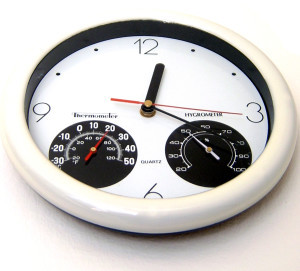
Step 5. Create a rough time line. This is the step with the most work.
6. Figure Out AccommodationThis is different for everyone and also for every place. Sometimes you may want to couch-surf, hotel, hostel, luxury, camp etc. You may want to book ahead or just rock up and see.
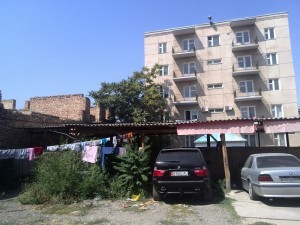
Step 6. Figure out your accommodation (if you want)
7. Create a budgetFor me this is the easiest of the steps in this travel planning guide. No matter where I go I budget $50/day + cost of getting to the country (e.g. visas and airfare). I find that when I average my spending over a month I never go over this figure, however, I am not a luxurious person.
You may wish to be more accurate about your calculations (see below for creating a more detailed budget). If you are going to add up all your predicted costs (transport, visas, accommodation, food, sightseeing etc.), what ever figure you come up with, double it for peace of mind and then forget that you did. In other words, stick to the budget you created, but have peace of mind in the fact that if something happens you have the reserve cash to bail you out.

Step 7. Work out your budget.
8. Stay FlexibleYou may have noticed that the plan you create from this travel planning guide is not so detailed and is very much a “roughly figure it out”. That is because, in my experience, detailed planning is often a waste of time, because I very rarely stick to my original plans. Many things can/do happen which will change them, both in and out of your control. Sometimes you just need to do things on a whim. You always learn about awesome stuff you want to see/do while in-country.
If you want to do it in more detail you can. The amount of time you have VS the number of things you want to do will determine the need for more detailed plans, i.e. less time your have the more important details becomes in order to do what you want.
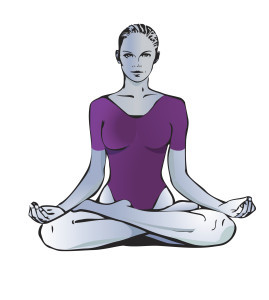
Step 8. Stay flexible. The most important step!
My Personal Trip Planning “Equations”I have decided to include these “equations” that I use when planning a trip if I want to get a more detailed budget than just the flat $50/day. Maybe it is useful, maybe you won’t understand it. As a pretext, the amount of time I spend in a country dependent on my visa allowance, i.e., I stay as long as I am allowed on a single visa, and if a single visa is not enough I will extend it and stay as long as I have on the extension.
Suss visa
Start learning language (if needed)
Rough travel plan – will I need to extend visa? (This is what the above seven steps are for)
Suss budget
Budget Total (T) = $50 x Length of intended stay (term of visa’s) (L)
Travel costs (to/fro and within) (Y)
Food (F) = average daily x L
Expected Sightseeing/courses etc (S)
Visas (V)
Accommodation max (per day) = {T-(Y+F+S+V)}/L
Excess spending money = Whatever is left over from T at end of trip
Run out visa, plan next place
Well that’s it for my 8 step travel planning guide. Do you agree, disagree, have your own steps etc.? Let me know in the comments.The post The Survive Travel 8 Step Travel Planning Guide appeared first on Survive Travel.
July 16, 2015
Bert’s Personal Guidelines for Travel
Accommodation Deals - Sponsored
Cheap Flights - Sponsored
Google Sponsored Ads
Contact Us to Advertise
I know a lot of travelers have very spontaneous personalities… not me. I have a set of guidelines for travel that I follow. Actually I have guidelines that I follow in almost all the important areas in my life (travel, health, relationships etc) and I believe that most other’s do also – perhaps you call them morals – so I guess these are like my morals for travel.
I treat these guidelines for travel in the same way that I treat all of my guidelines in life. I follow them most of the time, but I do not let them get in the way. Everything is flexible.
I find that having guidelines in life has many benefits, the major ones being:
Increasing efficiency (important when your aim is to minimise work time)Saves money (I budget $50us/day max)Helps with decision making (and therefore problem solving)Keeps me healthyBert’s Personal Guidelines for TravelThe guidelines are broken down into various areas.
Daily ScheduleWake Up
Morning Routine (See post on keeping healthy while traveling)
Out
Update blogs
Breakfast – Protein (e.g. eggs), two serves of fruit, green tea with clove oil
Dinner – Include lots of dark green leafy vegetables
During the day – Try local foods
Stick to keeping healthy guidelines.
Never spend more than $20usd a day on food (preferably $10usd)
AccommodationIdeal accommodation will have the following characteristics, with 1 being the most important and 5 being the least.
Decent locationInternetPrivateHot waterOn suite bathroomSightseeingNever spend more than $20usd on any tourist attraction unless it is something unique to that place which I am unlikely to see anywhere else.
TransportIf there is no rush to get from one place to another, never spend over 4 hours on a single journey.
If it is too far to walk take public transport – I very seldom take private transport (such as a taxi).
Do You Have any Personal Guidelines That You Follow When You Travel?The post Bert’s Personal Guidelines for Travel appeared first on Survive Travel.
Keeping Healthy While Traveling
Accommodation Deals - Sponsored
Cheap Flights - Sponsored
Google Sponsored Ads
Contact Us to Advertise
Long term travel can be tiring, especially if you have a busy itinerary. Lack of rest together with the unhealthy eating that often comes with traveling and contact with lots of people in enclosed spaces (trains, buses, high tourist areas etc.) can have a pretty big effect on your immune system. Here’s what I do in terms of keeping healthy while traveling
Actually, this is a bit of a “state the obvious” post, because keeping healthy while traveling is the same as keeping healthy when not traveling. Exercise, eat nutritious foods and get enough rest.
Keeping Healthy While TravelingThe biggest thing is to create a routine and keep to it as much as possible. Here is mine as an example. It is the same whether I am touring a country or have decided to chill for a while.
My Morning RoutineI know this morning routine takes two hours (two hours is the maximum, usually it is only an hour but I like to check email etc. also). It means that whatever I am doing the next day I will wake up at least two hours before having to leave the house. Sometimes this is not possible but as long as I stick to it when I can I find it is pretty good for keeping healthy while traveling.
Wake UpRinse my mouth (to get rid of the bacteria) and drink about 500mls of water (2 cups-ish).Exercise for 20-30 minutes, including stretching.Eat breakfast. Fruit, protein and green tea (with a couple of drops of clove oil in it and a multivitamin)Shower etc.Guidelines for Keeping Healthy While TravelingOther than my morning routine here are some guidelines for keeping healthy while traveling which I stick to most of the time.
If I have more than two hours to spare I will do more exercise.If I am touring I walk…. a lot. It keeps me fit, is cheaper and I get to see lots of stuff. I really like walking.I try not to cram too much in.Get enough rest. Tired? Find a park and take a nap!Eat well, lots of dark green vegetables. I stay away from deep fried food and stuff with lots of sugar or salt (unless it is a local speciality that I really want to try out).Drink lots of water and less sugar drinks (including alcohol).Don’t smoke.Wash clothes when staying in one place for more than 36 hours. Clean clothes are necessary for hygiene. 36 hours is more than ample time to dry clothes indoors even when humidity it high.If Going On a Long JourneyBy this I mean if you have to get on a bus/train/boat etc. for an extended period of time (more than say… four hours.)
Anything bad that has happened to me whilst traveling I can ride off as being worth it for the adventure and memories. There is one exception…
Getting belly problems (a.k.a. the sh*ts) while in transport.
It is something that has happened to me a couple of times and it is NOT fun.
Now I actively prevent it from happening.
If I know that a long journey is on the cards (which I try to avoid to begin with, but is sometimes necessary) my preparation begins 12-24 hours before the journey. I will only eat BRAT type foods and only drink water. Also, I will eat and drink less than I usually would.
BRAT stands for Bananas, Rice, Applesauce and Toast, but I do not restrict myself to these four things. By a BRAT type diet I mean that I eat bland foods that are unlikely to upset my stomach. Eggs, plain pasta, plain cooked veggies, bread, crackers etc. I know what I can and cannot eat, and I am sure you do to.
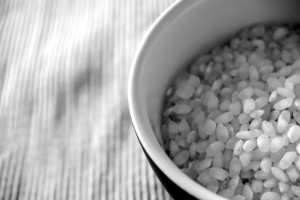
Plain rice is easy to digest.
Furthermore, I always make sure I have a stock of immodium or activated charcoal just in case.
Wear loose fitting clothing. Your body doesn’t need the pressure on your kidneys, and you will also be more comfortable in general.
When my journey ends I know that I do not have another one for at least 24 hours I go back to my usual testing of the fine foreign street foods.
What Things Do You Do for Keeping Healthy While Traveling?The post Keeping Healthy While Traveling appeared first on Survive Travel.
15 Things to do in Shunde, Foshan, Guangdong, China
Accommodation Deals - Sponsored
Cheap Flights - Sponsored
Google Sponsored Ads
Contact Us to Advertise
I taught at Shunde Polytechnic (China) for one year. Here is a list of 15 things to do in Shunde, Foshan, Guangdong, China and some information on how to get to them, costs etc.
1. Qinghui ParkCost: 15RMB
The first thing on my list of things to do in Shunde is QingHui Park. This park has stained glass windows, ponds with big goldfish and a nice little waterfall/man-made cave type system. I spent about 60-90 minutes in there. Apparently they give away post cards in the office (according to a friend).
Getting to Qing Hui ParkIt has its own bus stop. Many buses go there. It is across the road from new world, on the Starbuck’s side.
Bus 301 takes you there form the main gate of Shunde Polytechnic College
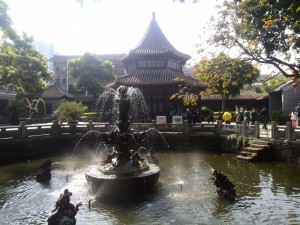
Qing hui Park
2. Shunde DessertsShunde is famous for food, more-so than other parts of China – this is according to people from Shunde.
As you walk out of the main entrance of Qing Hui Park, cross the road and turn right. On the corner there is a restaurant specialising in shunde deserts. I think the sign is yellow. Anyway, it will probably have lots of people in there. Try the double skin milk and the fried milk. Shunde is famous for them. They are sweet. Expect to pay about 10rmb per item.
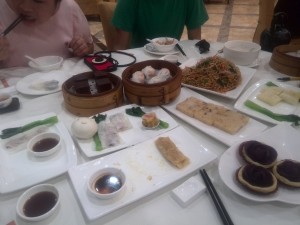
Morning Tea
3. DaliangDaliang is probably the most popular district to go semi-regularly. Just walk around to see what you see. There’s bars and stuff.
Getting to DaliangIt takes about 30 minutes by bus. Catch bus 919 from the East gate. Get off around Guipan Hua Yuan 桂畔花园 unless you have somewhere special you are going.
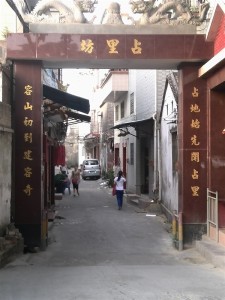
Somewhere in Daliang
4. Rong GuiRong Gui is another district you can look around and in my opinion is more interesting than Daliang.
Getting to Rong GuiCatch the 308 to Rong Gui. Get off around Fu Li Da Sha. 富丽大厦 (before KFC)
There is a computer store across the road from this stop and to the east is some markets – on the south side streets (right on first side street, across from grand hotel
5. Shun Feng Mountain ParkCost: Free
Walk around the lake, look inside the Old Chinese style buildings. May also be possible to climb the mountain, but it was so hot on the day I went so I didn’t find out for sure.
Getting to Shun Feng Mountain ParkCatch bus 919 to Shun Feng Shan Gong Yuan 顺峰公园.
6. Baolin TempleCost: 15rmb
Baolin Temple is one of the first things I checked out in Shunde as is worth the look. It’s a bit of a climb to the top and you can get a good view of town. You can also see Shun Feng Mountain Park, which I’m pretty sure is connected from the bottom, but we had already been there so wasn’t bothered to do the walk.
Getting to Baolin TempleCatch the 308 to Fu Li Da Sha 富丽大厦 then the 311 (or other) to Bao Lin Si 宝林寺.
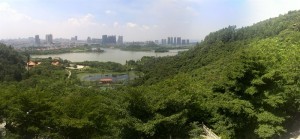
View from Bao Lin Si
7. Go to GuangzhouCost: 15RMB
Guangzhou is much more “China” than Shunde with lots to see and do and is easy to get to. Just catch the fast train from the Shunde Xue Yuan station. The journey is only 15 minutes, but then you have to get from Guangzhou South (which is a bit out of the way but connected by metro) to where ever you want to go.
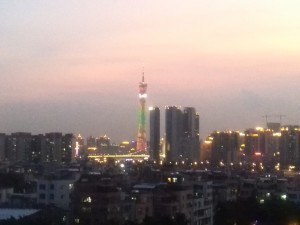
View of Canton Tower from my friends rooftop in Guangzhou
8. Bruce lee parkCost: 40RMB
I wrote a whole post about this and it has all the information you need to get there. Go here to see it.
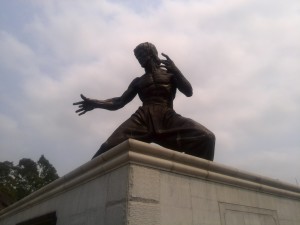
Bruce Lee Paradise has the worlds biggest statue of Bruce Lee
So this post is called things to do in Shunde but here are some things that are not really in Shunde, be are accessible from Shunde.
9. Go to Hong KongCost: 190rmb
Hong Kong is a three and a half hour ferry ride from Shunde Port and makes for a nice getaway if you need a break from mainland China. I went there a couple of times to visit friends who were going there.
Getting to Hong KongGetting to Hong Kong is extremely easy from Shunde Polytechnic.
Catch the number 907 bus from the east gate AWAY from Jusco i.e. catch it from teh side of the road closest to the school. The port is only one stop away. It is Shunde De Gong. Don’t forget your passport!
HK – Shunde: 0830 1100 1330 1520 1800
SD – HK: 0830 0930 1100 1500 1800
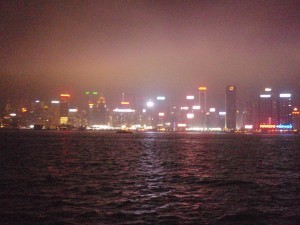
Hong Kong skyline from the river
10. Go to MacauAnother great place to go for a mainland getaway. The Vegas of China with a Portuguese influence and great egg tarts.
Getting to MacauCatch the fast train to Zhuhai and cross the border. It is very easy.
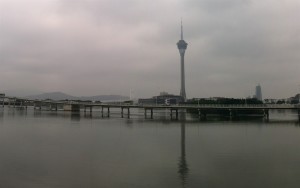
Macau Tower
These last few things I never actually went to but had thought about going at some stage which is why I have notes on them. Because I never actually went perhaps the information is not 100% correct. If you know better please let everyone know in the comments.
11. Zumiao Temple佛山祖庙 (Fóshān zǔmiào)
Cost: 20rmb
A Confucius temple, a memorial hall of kung fu legends and some other Foshan related historic stuff.
Open from 8:30am untill 6:00pm.
Getting to Zumiao TempleThe address is No. 21 Zumiao Road, Chancheng District.
The address in Chinese and pinyin – 佛山市禅城区祖庙路21号(Fóshānshì chánchéngqū zǔmiào lù 21hào)
Bus Routes: 101, 104B, 105, 106, 107, 109, 110, 111, 112, or 116 to bus stop Zumiao
Metro: Guang-Fo Line, get off at Zumiao station), [1].
12. Liangyuan ParkCost: 10RMB
It is the former residence of the Liang clan and has some traditional buildings in a large garden.
Getting to Liangyuan ParkTake bus number 5 or 18 from Foshan. Opening hours are from 0830 to 1730.
13. Lotus WorldCost: 50 rmb
荷花世界; Héhuāshìjiè. Claims to be the largest lotus ecological park in the world.
Getting to Lotus World in FoshanTake No.609 city bus at the Sanshui Railway Station or take tourist special line No.3 at Foshan Railway Station.
14. Renshou Temple仁寿寺. This temple has a history of Vajrayana but was then converted into Zen.
Located on Zumiao Road.
15. Go Anywhere Else in ChinaThe final item on this list of things to do in Shunde is to go anywhere in China. To get to any other major city you have 3 main options, train, plane, bus.
Long Distance BusLong distance buses leave from the Daliang Bus Station which is about an hour bus ride from Shunde Polytechnic. It is my least preferred way to get out of Shunde.
PlaneGuangzhou BaiYun Airport is fairly easy to get to thanks to a Shunde to BaiYun Airport shuttle bus. Catch the bus to walmart and walk to the shuttle bus. Sorry, I can not give you a compass direction. You have to walk away from Walmart in the same direction your bus was headed (assuming you are coming from Shunde Polytechnic), across the road.
The bus leaves every 30 minutes from 0500 – 2000 towards Baiyun.
0730 – 0030 from baiyun.
It costs 43 RMB and takes about 1.5 hours depending on traffic.
The fast train connects you to Guangzhou Nan, and from Guangzhou you can go just about anywhere. If connecting to another fast train then you are in the right station. If you have to get a slow train you need to catch the metro to another station, probably the main rail station.
Usually in China you can buy train tickets from any train station. You can not do this at Shunde Zhi Yuan Train Station. Instead, go to the ticket office. It is near Jusco, just next to the postal savings bank. As you face the postal savings bank, it is on your left. It is small. Look for 大良南国东路. Asking in any of the shops for Huo Che Piao (train ticket) and they should be able to point you in the right direction.
Apparently it closes at 20:00, but like everything in China this may or may not be true on any given day.
Unlike other ticket offices I’ve been to, this one does not charge any extra fee (usually around 5rmb), which is good.
Unless you speak Chinese, write down what you want (in Chinese).
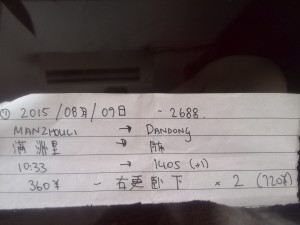
A sample of how I write down what train ticket I want. The line at the bottom means hard sleeper bed, bottom berth.
Well that’s it for this post on Things to Do in Shunde.Please add or correct stuff in the comments :).
The post 15 Things to do in Shunde, Foshan, Guangdong, China appeared first on Survive Travel.
July 8, 2015
Basic Wing Chun Training – Wing Chun Kung Fu Training for Street Fighting and Self Defense
Accommodation Deals - Sponsored
Cheap Flights - Sponsored
Google Sponsored Ads
Contact Us to Advertise
Discover the Martial Arts Training that Made the Legends Bruce Lee and IP Man: Wing Chun Kung Fu!Kindle: SurviveTravel.com/Wing-Chun-Amazon $6.37
Print: SurviveTravel.com/Wing-Chun-Print $12.67
Basic Wing Chun Training: Wing Chun Kung Fu Training for Street Fighting and Self Defense is a Wing Chun Kung Fu training manual designed to progressively teach basic Wing Chun techniques and principles and shows how to adapt the Wing Chun techniques learnt for use in street fighting and self defense.
Although anyone with an interest in martial arts will gain value from this basic Wing Chun training it, it is primarily intended for:
People who are thinking about learning Wing Chun Kung Fu but first want an insight.People who know they want to learn Wing Chun but want some basic knowledge of principles and techniques before joining a professional Wing Chun class.Beginners who are already learning Wing Chun and want to supplement their training and/or learn how to adapt the Wing Chun techniques and concepts to street fighting and self defense.Teachers of Wing Chun Kung Fu who want some ideas on training beginner students.Anyone that wants to self-train in Wing Chun Kung Fu.Basic Wing Chun Training is Jam packed with Wing Chun TechniquesPlease Look Inside at the contents to see everything you will learn.
The legendary Wing Chun punch.Arm-locks.Wing Chun strikes including punches, kicks, elbows, knees and the chop.Trapping and grabbing.Interception adn counter-attack.Repeating punches.Defending against common attacks and combinations.Contains 42 Wing Chun Lessons, 97 Training Exercises and a Never-Ending Training Timetable!Basic Wing Chun theory is embedded into practical lessons.Conditioning exercises to give your body the strength to do the techniques.Basic footwork for speed and balance.The Centerline Principle (a core concept in Wing Chun).Wing Chun training drills for developing lightening fast reflexes.The direct line principle.Use of training equipment.Correct body alignment and weight distribution for maximum stability, speed and power.Traditional Wing Chun Positions and MovementsTan Sau (Dispersing Hand)Pak Sau (Slapping Hand)Bong Sau (Wing Arm)Lap Sau (Pulling Hand)Kau Sau (Detaining Hand)Fut Sau (Outward Palm Arm)Gum Sau (Pressing Hand)Biu Sau (Darting Hand)… and much, much more!
Basic Wing Chun Training Also Includes a Comprehensive Wing Chun Training Schedule132 training sessions using the lessons and exercises in this book.Training sessions 89 to 132 can be repeated indefinitely – You will have a never-ending Wing Chun training schedule!Starts with the basics and progressively increases in difficulty.Practices repeat exercises so they are ingrained into your muscle memory.Easily modified for those want want to train more or less.Kindle: SurviveTravel.com/Wing-Chun-Amazon $6.37
Print: SurviveTravel.com/Wing-Chun-Print $12.67
Sam has had an interest in self preservation and survival (e.g. wilderness medicine, fighting, fitness, escape and evasion, urban and wilderness survival) for as long as he can remember.
His accumulated knowledge is a result of years of formal and informal training, career related experience and general interest in survival, martial arts, the military, adventure travel and other various outdoor pursuits.
Describing himself as a ‘Survival, Minimalist, Traveler’, he has now devoted himself to traveling the world taking training courses (Jeet Kune Do in China, wilderness medicine in the US, parkour in Singapore, survival courses in Africa etc.) and sharing what he learns through his training manual style books.
He is also a moderator and key contributor of SurviveTravel.com.
See all of Sam Fury’s publications
Kindle: SurviveTravel.com/Wing-Chun-Amazon $6.37
Print: SurviveTravel.com/Wing-Chun-Print $12.67
In modern times Wing Chun Kung Fu (also known as Wing Tsun) has been made famous by Bruce Lee and Yip Man. It is regarded as one of the best martial arts for not relying on strength or physical size. Wing Chun Kung Fu is practical, efficient and suitable to learn for all those interested regardless of age, gender, size or strength.
Get your copy of Basic Wing Chun Training: Wing Chun Kung Fu Training for Street Fighting and Self Defense today!
The post Basic Wing Chun Training – Wing Chun Kung Fu Training for Street Fighting and Self Defense appeared first on Survive Travel.
May 24, 2015
Teaching in Shunde Polytechnic College, Shunde, Foshan, Guangdong, China.
This post is my personal opinion of what it is like living and teaching in Shunde Polytechnic College (Foshan, Guangdong, China) as well as some useful ���logistical��� type information.
When I first came to China I taught English in Shanxi (north of China) in a high school. I did that for a year, but it was too cold and teaching high school was not for me. Next I did a year in Guangdong Ocean University. It was much better than my first job, but by the end of it I was over teaching English. I was going to leave China but ‘last minute’ I got offered a job in Shunde (Foshan) to teach business at Shunde Polytechnic, so I accepted it. This post is my personal opinion of what it is like teaching in Shunde Polytechnic College. I did teach some English units also, and I taught the business units in English, so I’m sure most foreign teachers that are thinking of teaching in Shunde Polytechnic College can find this information useful, or at least, that is the idea.
Shunde ������ is a ���city��� just outside of Foshan������, which is just outside of Guangzhou������. Technically, Shunde is part of Foshan. Shunde Polytecnic College itself is about a 20 minute bus ride from downtown Shunde.
If you want to take a taxi the full name is Shunde PolyTechnic College. Shunde Zhi Ye Ji Shu Xue Yuan. ������������������������������
Getting to Shunde Polytechnic College from GuangzhouThe easiest, fastest and cheapest way is to catch the high speed rail. Go to Guangzhou South Railway Station, Huo Che Nan Zhan, ������������. Catch the train to the Shunde College station. The train costs about 20rmb and takes about 15minutes. From the train station, catch the 919 to the college for 2rmb.
To catch a bus, get to Guangdong East Bus Station, Qi Che Dong Zhan ������������ and buy a ticket to Da Liang Zhan ���������. It costs about 26 rmb and takes about 90 minutes. From the Da Liang bus station, catch a bus to Shunde Polytechnic College. The fare is 2rmb.
Note: The Shunde College High Speed rail station has strict security, probably because it is new and doesn’t get much ���traffic���. They took my pocket knife of me and recorded my details.
There is a direct bus service from the Baiyun (Guangzhou) airport to Shunde, which will drop you near Walmart. From there you can catch the bus to the Shunde Polytechnic East Gate. Check below for further directions, under the shopping in Shunde heading.
Buses leave from the airport every 30 minutes from 0730 to 0030, take about 1.5 hours (depending on traffic) and costs 43 RMB.
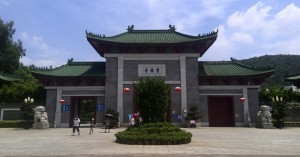
Entrance Gate of Bao Lin Si – a short bus ride away from Shunde Polytechnic
Living in Shunde Polytechnic CollegeThe apartment they give you when employed teaching in Shunde Polytechnic College is very livable, because you are actually living in a guest house. They are equipped with two air cons, nice view, electronic doors, reception etc. Somehow mosquitoes still get in, but your bed has a mosquito net around so it is fine when you sleep (and you feel like a princess).
It’s semi tropical in summer, you will use the air-con, and doesn’t get too cold in winter – maybe you’ll want a heater, but all in all the weather is not too extremem either end, and is warmer than it is cold. In any case, as with all school based jobs in China, your holidays fall in the extremes so if you don’t like it, just go to another country for the holidays.
The college is somewhat isolated. It is about a 20-30 minute bus ride to most off-campus stuff e.g. walmart, town etc, but the campus has everything you need including a bunch of cafeterias which are pretty cheap (think 6-7rmb for a decent meal) and a few little restaurants. There is also a small fruit stand and a very mini mart that sells a bunch of stuff.
Across the road from the school is another couple of restaurants, billiards and a bar.
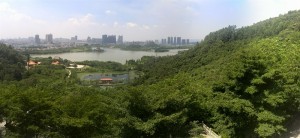
View from Bao Lin Si Shunde
Teaching in Shunde Polytechnic CollegeAs I said before, I taught business in Shunde Polytechnic, which is a bit different from teaching English because it is a set curriculum. I did, however, teach a few Business English units while teaching in Shunde Polytechnic College, which is pretty similar to just teaching English so I’ll comment about that later.
The business course in in collaboration with Sydney TAFE and/or Britains BTEC. It is the same curriculum as they teach in the respective countries, only you are teaching in in English to non-native English speakers, which can be challenging. Basically the idea is to teach them how to pass… whether or not they actually learn the material is kind of abjuratory in the colleges mind. Sounds bad I know, but it is common thinking in China.
I studied a similar course in Australia, so it is kind of my ‘field’ which is why I enjoyed it.
I did also teach a few business English modules, which to me was very similar to teaching oral English. Everyone has their own methods for teaching English, so just do what you do.
Overall, teaching in Shunde Polytechnic College is good. The administration does not bother you as long as you show up on time and do your job. As with many places in China, as long as the students do not complain about you, it is fairly easy sailing. Also, not much paperwork.
16 hours teaching is the contracts maximum per week. I did about 14. Some teachers are supposed to do English corner once a week, but it depends on your department.
Bureaucracy is the same as other places I’ve worked. Sometimes you have ‘holidays’ but then find you have to make up the classes on the weekend. It’s just China. Some foreigners get annoyed at this, as I did in my first year, but just go with it.
Pay here is good compared to other places I’ve worked. I think minimum 7500rmb/month depending on qualifications and department. Also, you get paid for your holidays, and we even got a Chinese New Year bonus.
You have to pay 300rmb a month rent, plus gas, electricity, water etc, but even after all this I still take away a few thousand more than my previous jobs.
TV reception is good (with a couple of English channels), internet is included and they give you a push bike to cruise around on e.g. to ride to class.
The grounds itself is pretty nice with all the things you’d expect in a University (not an American College) including a pool (open semi according to the advertised times), library, gardens, athletic fields etc.

View a from Shun Feng Mounain Park – also a short bus ride from Shunde Polytechnic
Getting Around Shunde Polytechnic College>
For specific directions on recreational things to do in and around Shunde, check out these related posts.
There are 2 bus stops that serve Shunde Polytechnic College. There is one at the main gate (South) and one at the East Gate. Both are about a 10-15 minute walk from the teachers��� apartments.
Front Gate Bus Stop. Shunde Zhi. Yuan ������������Serves bus routes 301, 308, 312, 918, 925.
East Gate Bus Stop. Sheng Zhi Jian Ji Di. ���������������.Serves bus routes 307, 907, 919
Most buses run until about 2100-2200, but check the times just in case. Most buses cost 2rmb.
307 and 907 from the East gate will take you to the fresh market and Aeon.
907 and 919 will take you to One City.
907 and 301 goes to town
Buses from the front gate are 301, 308, 312, 918, 925
Buses to the east gate (as far as I can tell) are 307, 907, 919.
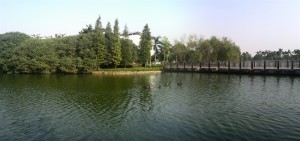
A lake on Shunde Polytechnic Campus
Going Shopping in ShundeThere are a few big supermarkets which are one bus ride away from Shunde Polytechnic. By supermarket I mean like a big Walmart or Tesco where you can buy groceries, kitchen equipment, clothes etc.
Getting to RT MartFrom the Front gate, do not cross the road. Take bus 312 till stop ���������X���. X might be either A or B, either way it is the same. It���s the 2nd last stop on that line, in the direction you will be heading.
To get there from the east gate, cross the road and catch bus 307 (heading North when you get on it).
Getting to Jusco, Walmart and TescoCatch the 307, 907 or 919 from the east gate. Get off at Yong Wang Gou Wu Zhong Xin, ������������������Jusco is best for foreign foods, but also more expensive in general. Don���t bother going unless you want specific foreign fare.
A few stops more on the 919 is Walmart, and a couple more still is Tesco. I prefer Tesco, but they are basically the same.
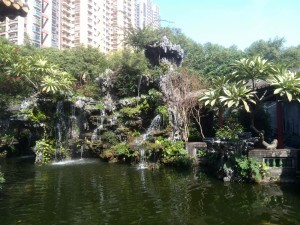
Qing Hui Park – another place hat is a bus ride away from Shunde Polytechnic
Getting to the Fresh MarketLike every fresh market, it sells local produce. It has everything you need fresh food wise, and there���s a few little stores about that sell dried goods e.g. noodles, rice, beans etc. There���s also a small ���restaurant��� that sells BBQ duck/pork/chicken. 5rmb worth is enough for me, they put it with veggies and all you can eat rice. It���s delicious.
If you don���t want anything ���special���, you can get everything you need from this market, and it is only a ten minute bus ride as opposed to 20-40 for the other places.
From the East Gate, get on the 307, 907 ������������(Feng Sha Shi Chang.)
Note: Shi Chang ������ means fresh market, so if you see that in China, you know what it will be.
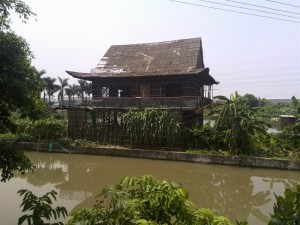
This old house is on the way to the fresh market
Well that’s it for this post on teaching in Shunde Polytechnic College. As always, if you want to add/update anything, let me know in the comments.
The post Teaching in Shunde Polytechnic College, Shunde, Foshan, Guangdong, China. appeared first on Survive Travel.
May 22, 2015
Finding the Best Place to Live in the World
Finding the best place to live in the world is my Ninja Mission #2.
I’m now making enough residual income to just travel constantly (min $50usd/day). My next step is to find my perfect ‘home’ i.e. my best place to live in the world, so I will spend the next 5-10 years exploring my possible places.
Best Place to Live in the World RestrictionsObviously the things that I consider to make the best place to live in the world are different from what yours may be. The following are what I have identified as ‘must haves’ or ‘restrictions’ which may apply on either a Country and/or *City level.
*City just refers to exact location, not necessarily a city e.g. village, town etc
WarmYear round warmth. So this basically narrows down the country list for the best place to live in the world to near the equator.
Good foodThis is a bit ridiculous because I eat everything, and I pretty much think everywhere in the world has good food.. but if I come across somewhere that doesn’t have good food then it will be a deal breaker and will instantly be crossed off the best place to live in the world list. Maybe on a city level this becomes more apparent e.g. very small towns won’t have much variety.
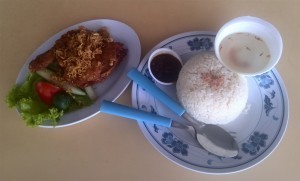
A style of chicken rice, apparently famous in Singapore. Delicious.
Language FriendlyI could literally find paradise on Earth, but if I can’t speak to anyone than it still would not make the cut as the best place to live in the world for me.
Three options for this one:
1. English speaking country
2. English is commonly spoken
3. Failing either of the first two, then at the very least, a Latin based language that uses the Roman Alphabet so it won’t be too hard to learn (preferably Espanol)
HealthyThere’s no point being in the best place to live in the world if you are sick all the time… or if you get hurt and have to leave. Here’s my criteria for this one:
*Access to decent health care, that is relatively cheap
*Relatively clean air
*Access to recreational facilities e.g. yoga, parks, swimming etc
*Local food generally healthy
I dislike work, so I would need to get by on my residual income, so for me, the best place to live in the world means somewhere where living on $500usd/month would be possible if needed ($300rent and 200food), and with $1000month I’d be living comfortably.
Modern ComfortsThis is probably more relevant to City Restrictions, but I guess there are whole countries without this e.g. in Africa, countries at war etc.
The most important things to make the cut as the best place to live in the world in this area is internet, since I need it to make money and somewhat for entertainment. 2nd is hot running water.
Ability to stay long termActually, this isn’t really an issue during my initial search of the best place to live in the world because I feel if I really find somewhere I like I can always find a way to live there. Worse case scenario, I’ll just keep re-entering on tourist visas… or perhaps I’ll fall in love and marry a local (definitely a last resort move!)
List of Regions to ExploreTaking the above things into consideration, on a regional level I have decided on the following candidates as the best place to live in the world:
Latin America (Central and South America)
I’m pretty confident that out of all these places I will be able to find at least one (probably alot more) candidates for the best place to live in the world
Q. No Europe, Australia, North America?? Don’t you want to go to these places?
A. Of course I do. But I know that I won’t want to call either of them home. Once I find my best place to live in the world I will set up ‘base’ and then do the rest of the world from there.
Plan of Travel for Each CountryHere is how I go about planning my time in each country while I search for the best place to live in the world.
1. Get longest single entry tourist visa possibleSelf explanatory.
2. Create Rough Itinerary*Create rough plan of all things want to do – Wikitravel / Must sees
*Plot on map
*Basic Itinerary – not rushed – 3+ nights in each ‘city’
*Basic transportation
Anything more than 4 hours drive, add a stop
4. Visa extension if neededIf my itinerary goes for longer than the tourist visa, suss out about getting and extension.
5. Run out visas in favorite placeAfter I have explored the country, use up the rest of my visa in the place(s) I considered for me to be the most livable and spend my time there writing and planning next place.
A ListHere is a list of places that rate high on my list for best place to live in the world so far. Every-time i find a place I’ll add it.
Nothing yet!
Actually, there are a few places I have been in South America, but I haven’t spent enough time in them to make a proper decision of whether they make the cut as best place to live in the world.
The post Finding the Best Place to Live in the World appeared first on Survive Travel.
May 1, 2015
Wilderness and Travel Medicine: A Complete Wilderness Medicine and Travel Medicine Handbook
A Minimalist Approach to Wilderness Medicine, Travel Medicine, Survival Medicine and Home Remedies
Kindle: SurviveTravel.com/Wilderness-Travel-Medicine $8.77
Print: SurviveTravel.com/Wilderness-Travel-Medicine-Print $17.57
Whether it is first aid, wilderness medicine, travel medicine, survival medicine or home remedies, different scenarios call for different treatments, and this book covers them.
Note: Although this book has a minimalist approach, there is A LOT of information covering a VERY wide range of ailments.
A Comprehensive Wilderness and Travel Medicine Handbook With a Minimalist ApproachDiagnoses and treatments for a very wide range of injuries, illnesses and scenariosHow to improvise what you need when modern medicine is not availablePharmaceuticals, medicinal plants, veterinary substitutes and other alternative remediesPreventative methods so you don’t get sick/injured in the first placeSafe use and dosage instructions for suggestion medicationsSample minimalist travel-safe first aid kitInformation for each condition containsA brief description about the conditionSymptoms that may be experienced as a result of the conditionAppropriate treatment(s) for the condition depending on the situationOther supplementary information may also be included where applicable, e.g., causes, prevention, alternative/natural remedies, possible complications.For ease of use, this book is made of two parts.Part I is ‘Must Read’ information covering:Anatomy: This is a basic rundown of how the body’s systems work individually and as a whole. Knowing this will make diagnoses and treatments easier.
Prevention Medicine: Prevention is the best cure. This chapter is useful information about how to avoid getting sick and/or injured in the first place.
First Aid Kit: An inventory and simple explanation of a suggested minimalist first aid kit for travelers.
Medications Guide: Important information on the safe use of the medications referred to in this book.
Immediate First Aid: Contains the information needed on what to do medically in immediate, life threatening situations.
Secondary Exam: A secondary exam will help you to make an accurate medical diagnosis.
Moving a Patient: Learn a variety of methods to safely move a patient.
Part II is all the diagnoses and treatments, which are uniquely categorized by cause and/or body area to enable quick searching.Environmental: travel and tropical related diseases (malaria, yellow fever etc), cold injuries, heat illnesses, animal attacks, insects, allergies, altitude, scuba, marine life, toxic plants, jetlag etc.
Head: headaches, brain injuries, ear infections, eye infections, sinus infections, dental issues etc.
Circulation: shock, dehydration, diabetes etc.
Digestive: diarrhoea and dysentery (including traveler’s diarrhea), constipation, alcohol, food poisoning, nausea (including motion sickness), worms, salmonella etc.
Genitourinary: sexually transmitted diseases, pregnancy, UTI’s, yeast infections etc.
Integumentary: skin disorders, nail injuries, splinters, chicken pox etc.
Musculoskeletal: sprains, strains, fractures, dislocations, amputation etc.
Respiratory: asthma, strep-throat, bronchitis, cold and flu, pneumonia, etc.
…and much more inside!
Get your copy of Wilderness and Travel Medicine: A Complete Wilderness Medicine and Travel Medicine Handbook today!
Check Out What Others are Saying About Wilderness and Travel Medicine: A Complete Wilderness Medicine and Travel Medicine Handbook***** Don’t leave home without it By Paganni’s Ghost
***** Must read By california
***** Great information! By Brad Mayo
Kindle: SurviveTravel.com/Wilderness-Travel-Medicine $8.77
Print: SurviveTravel.com/Wilderness-Travel-Medicine-Print $17.57
Sam has had an interest in self preservation and survival (e.g. wilderness medicine, fighting, fitness, escape and evasion, urban and wilderness survival) for as long as he can remember.
His accumulated knowledge is a result of years of formal and informal training, career related experience and general interest in survival, martial arts, the military, adventure travel and other various outdoor pursuits.
Describing himself as a ‘Survival, Minimalist, Traveler’, he has now devoted himself to traveling the world taking training courses (Jeet Kune Do in China, wilderness medicine in the US, parkour in Singapore, survival courses in Africa etc.) and sharing what he learns through his training manual style books.
He is also a moderator and key contributor of SurviveTravel.com.
See all of Sam Fury’s publications
Kindle: SurviveTravel.com/Wilderness-Travel-Medicine $8.77
Print: SurviveTravel.com/Wilderness-Travel-Medicine-Print $17.57
Get your copy of Wilderness and Travel Medicine: A Complete Wilderness Medicine and Travel Medicine Handbook today!
The post Wilderness and Travel Medicine: A Complete Wilderness Medicine and Travel Medicine Handbook appeared first on Survive Travel.
April 20, 2015
Bruce Lee Paradise – Bruce Lee’s Ancestral Home
Bruce Lee Paradise is in Shunde, Foshan and is often billed as Bruce Lee’s ancestral home. It is not. In fact, It is probably one of the most disappointing paradises I’ve been to, and I’m a really big Bruce Lee fan. However, it is something I did so here’s so (hopefully) useful information for anyone thinking about visiting Bruce Lee Paradise.
Brice Lee Paradise – Not Bruce Lee’s Ancestral HomeAccording to my research on the world wide web, Bruce Lee’s ancestral home is on Daliang road in Shunde. This is what we wanted to go to, however, I can not seem to find a Daliang road in Shunde (although there is a whole district called Daliang). Every other bit of information we found said that this was Bruce Lee’s Ancestral home. It is obviously not, but it is where we ended up. I am still wanting to find his actual ancestral home, so if I ever do I’ll update this post.
Getting to Bruce Lee ParadiseI went there from Shunde Polytechnic (where I am currently working – a post will be posted by the end of August ’15), but if you can get yourself to the main Shunde Bus Terminal than just catch the 391 and it will take you to the same place. From Guangzhou you can catch a bus to Shunde. It takes about 2 hours I think and costs less than 100RMB.
To get to Bruce Lee Paradise from Shunde Polytechnic catch the 307 from the east gate to Jusco. The picture below is the name of the stop. This journey takes about 25 minutes depending on traffic.

The name of the bus stop to get of at Jusco
Swap buses to the K391 and get off at the stop shown in the picture below. It is about a 50 minute bus ride and costs 6RMB. Shwo the driver a picture of the stop name so he knows what’s going on, or try out your Chinese and say Lee Xiao Leng Le Yuan Lu Kou – literally meaning the Bruce Lee Paradise Street Entrance. Lee Xiao Leng is Bruce Lee’s Chinese Name. Xiao Leng means little dragon. In Chinese the surname goes first.

Bus stop to get off at Bruce Lee Paradise – Shunde
Follow the sign down the road to Bruce Lee Paradise. It’s a big sign, you won’t miss it.
Inside Bruce Lee ParadiseAs I eluded to before, this place is far from paradise, and in fact has not much to do with Bruce Lee. I didn’t take many photos, but I wish I had to truly encapsulate the essence.
It costs 50RMB to get into Bruce Lee Paradise, which includes a 30 minute wooden raft ride.
The World’s Largest Stature of Bruce LeeProbably the best thing in this place is the world’s biggest statue of Bruce Lee. It is not breathtakingly massive, but it is pretty big… much bigger than me and you. According to the this internet source, the world’s biggest statue of Bruce Lee is just shy of 20 meters tall (18.8 to be a little more exact).
Update: According to news.xinhuanet.com (linked above) the Bruce Lee Ancestor’s House less than a 1 km from the park – I will not be going back to find it.
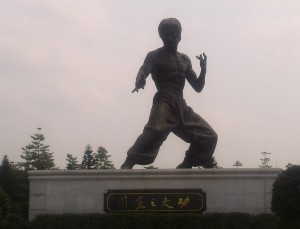
Worlds biggest statue of Bruce Lee. 18.8 meters tall.
I took two photos. Two badly lit photos is better than one, right?
Everything Else to Do in Bruce Lee ParadiseThere’s this man made waterfall which you can go up to, walk to the top and walk amongst. I just looked at it from afar.
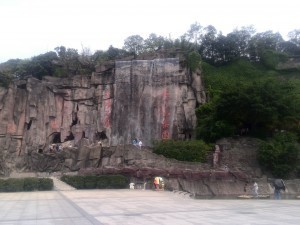
A man made waterfall at Bruce Lee Paradise
There is a small cinema type room that shows a loop reel of the best fight scenes from Bruce Lee’s movies. Actually, I really enjoyed this, since the fight scenes are the best things about Bruce Lee’s movies.
There is also a museum which is interesting if you want to learn about Bruce Lee.
The vast majority of Bruce Lee Paradise in Shunde, Foshan, is a lake which you can walk around in about an hour or rent a bike (we didn’t so I don’t know how much it costs). There are some things scattered around the lake to break up the walk such as this wooden raft ride. It comes included in the price of your ticket and is supposed to last 30 minutes. You are asked to do some of the paddling – actually it is more of a gondola where you have a pole to push off the bottom of the lake.
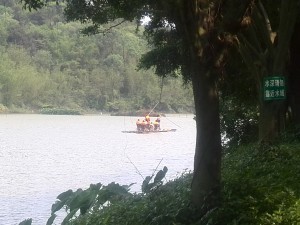
Wooden raft ride – they\ll ask you to do some of the ‘paddling’
That’s all the pictures I took but there is also Herron viewing spot, a small animals ‘park’ (2 pigs, 2 small cows and a rabbit all living in horrendous conditions), a small theme park with rides including go-carts, bumper cars, roller coaster and some other things. For those of you that like theme park rides, don’t get exited, they a mini-fied and did not look very good. Finally, there are a couple of hills you can climb and some other scenic type spots with very descriptive names.
I’m not sure how I feel about Bruce lee Paradise. It was something to do, and did have some Bruce Lee stuff. It was nice to walk around, but I don’t think it was worth the 2 hour bus ride and 50RMB. We did however, get some good noodles from across the road of the entrance. Comments and questions always welcome.
The post Bruce Lee Paradise – Bruce Lee’s Ancestral Home appeared first on Survive Travel.





